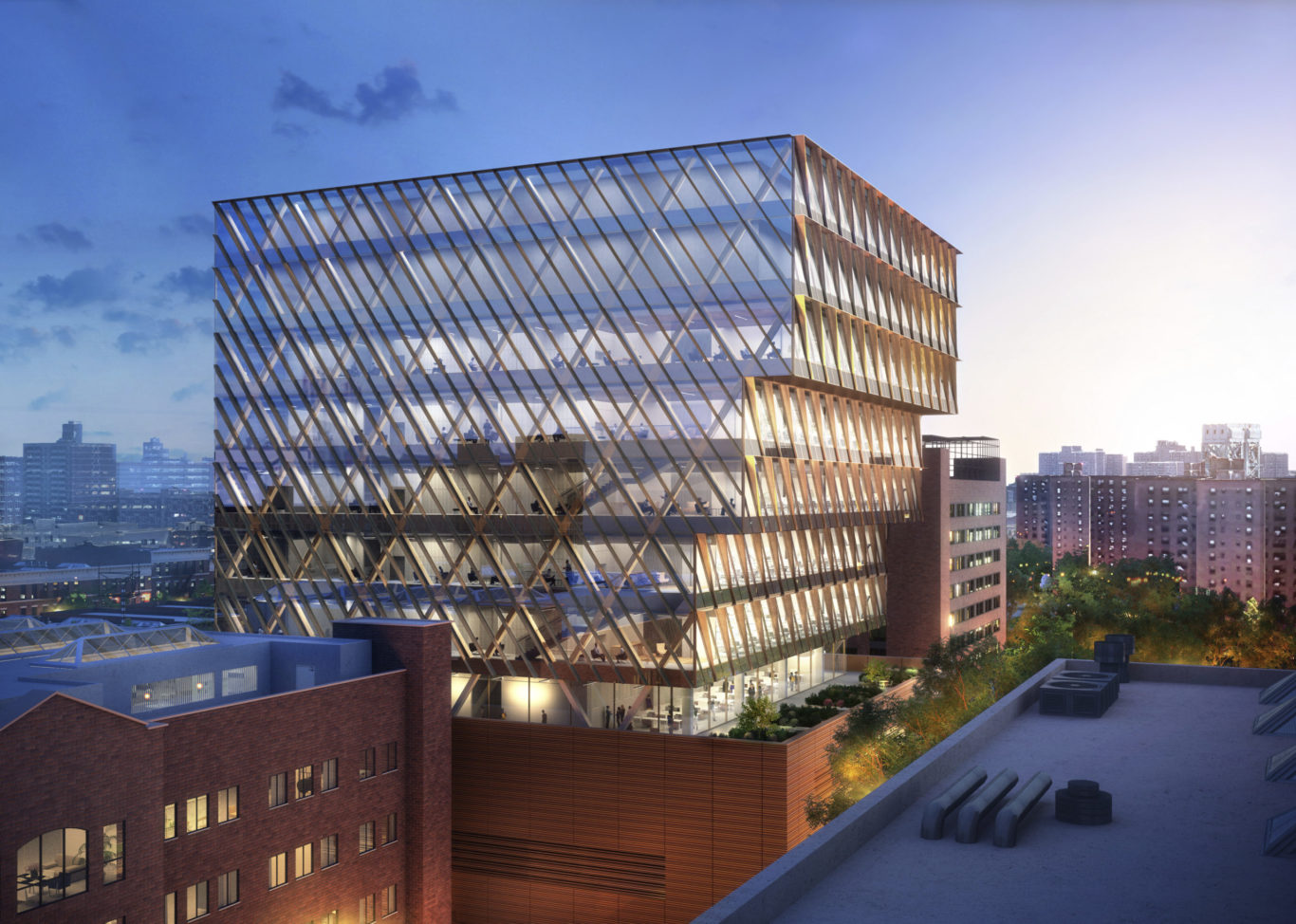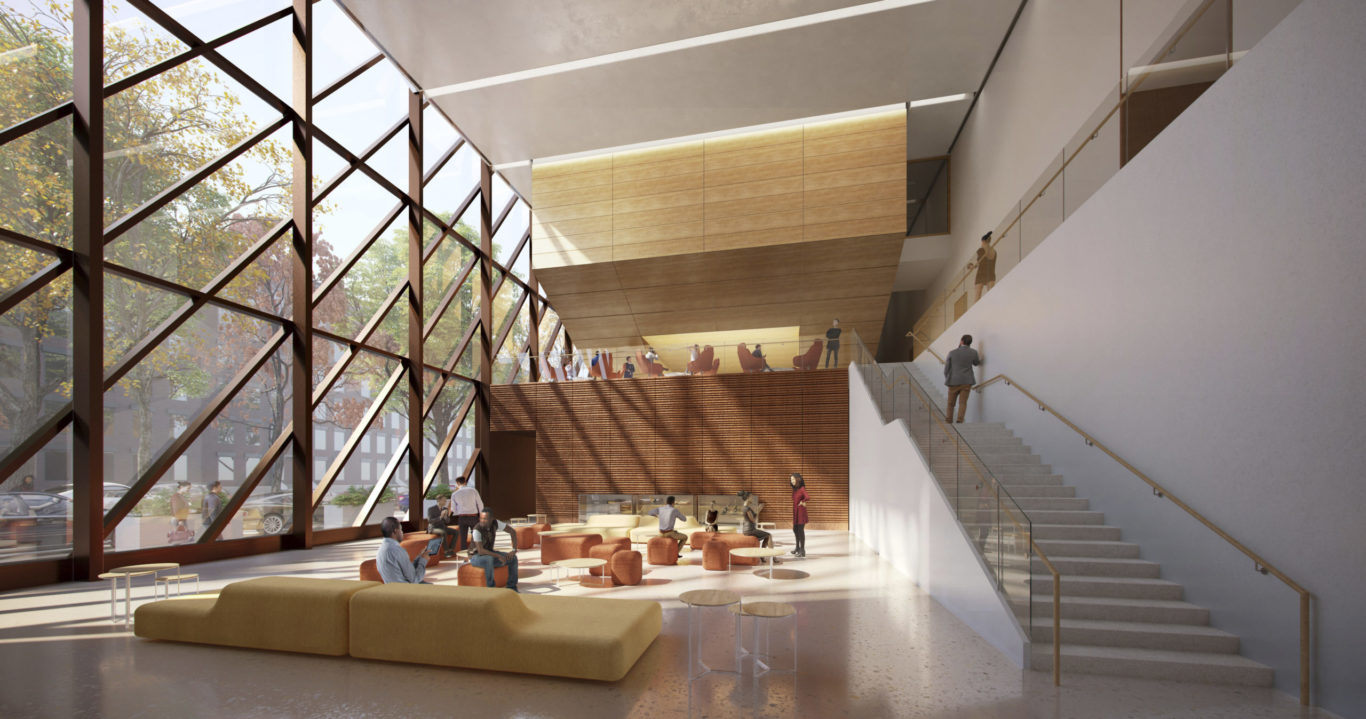Skidmore, Owings & Merrill (SOM) today unveiled the design for the New York City Public Health Laboratory, a new, state-of-the-art facility for New York City’s Department of Health and Mental Hygiene. The 10-story, 230,000-square-foot building—to be located adjacent to the Harlem Hospital complex on 137th Street—will replace the existing laboratory in Kips Bay with a modern and flexible facility, and will strengthen the city’s abilities to protect and promote the health of all New Yorkers. Last month, the project was named one of 14 winners of the Public Design Commission’s Award for Excellence in Design, which recognizes civic projects that promote health and wellbeing.
Established in 1892 to address New York’s diphtheria outbreak, the New York City Public Health Laboratory was the first municipal bacteriological laboratory in the world. Last year, during the initial outbreak of COVID-19, it was the first laboratory in the city to perform COVID-19 testing.
The new building will offer testing and monitoring services for a wide range of clinical and environmental health concerns. From microbiology and virology to immunology and biosafety, the building will provide advanced facilities for the laboratory’s numerous focus areas and further enhance its capability to respond to a variety of pressing public health issues.
“This extraordinary urban laboratory will provide the New York City Department of Health and Mental Hygiene with a facility that will bolster their ability to protect the city from familiar threats, as well as unknown public health challenges that lie ahead,” said SOM Design Partner Mustafa Abadan.
The building, organized in two parts, features an urban-scale glass, cubic laboratory volume rising from a pedestrian-scale masonry podium. The three-story podium houses essential support functions as well as the facility’s community-facing program. Directly atop the podium is a floor containing administrative functions and a partial green roof. Above this rise five floors of state-of-the-art laboratories equipped to support a wide range of testing needs and designed to accommodate future changes spurred by public health events.
The design of the laboratory tower is characterized by its structural diagrid and corresponding diagonal glass and metal cladding. On the south side, the volume steps outward to accommodate various laboratory sizes dictated by necessary vertical and horizontal adjacencies, with the resulting massing providing passive solar shading. Designed with staff wellness in mind, the laboratory will comply with New York City’s new, ambitious resiliency and sustainability regulations.
While the building is a critical testing laboratory with secured access, it is nonetheless designed in the spirit of a true community facility with the goal of increasing public engagement. In order to broaden the laboratory’s public health mission and embrace its role as an active participant in its vibrant Harlem neighborhood, the new facility includes several resources—a testing facility, training lab, and auditorium—available to the surrounding community.
“The design of the new laboratory is the culmination and celebration of mission, culture, and place,” said Scott Habjan, senior designer for SOM’s New York Health and Science practice. “It moves beyond familiar institutional aesthetics to convey the duality between the building’s precise, rigorous laboratory environments and its dynamic Harlem context.”







